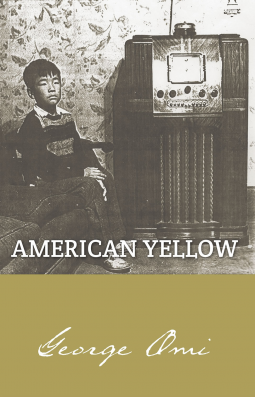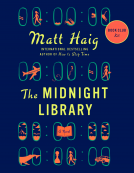
American Yellow
by George Omi
This title was previously available on NetGalley and is now archived.
Send NetGalley books directly to your Kindle or Kindle app
1
To read on a Kindle or Kindle app, please add kindle@netgalley.com as an approved email address to receive files in your Amazon account. Click here for step-by-step instructions.
2
Also find your Kindle email address within your Amazon account, and enter it here.
Pub Date Mar 15 2017 | Archive Date Jun 30 2017
Description
The day Japan bombed Pearl Harbor, Minoru Omi's whole life was turned upside down. Racial tensions ran high -- his father, a Japanese immigrant, is questioned by the FBI, and eventually his family is uprooted from their lives in San Francisco, and forcibly relocated to desolate Rohwer, Arkansas. He and his little sister leave behind their school and friends, while their immigrant parents give up their hard-won dry cleaning business.
Still, though, their family resolve persists -- and even while facing tough times thousands of miles from the city he was born in, Minoru manages to get into trouble with snakes, bullies, and out-of-bounds candy shops, just like any other young boy. Interned or not, he finds a way to thrive.
Follow the Omi family as they make their way through World War II -- from San Francisco to the internment camp in Arkansas and back again.
Keywords - Japanese, Minoru, Pearl Harbor, War, Japan, Evacuation, Bombing, Internment Camps
A Note From the Publisher
Keywords - Japanese, Minoru, Pearl Harbor, War, Japan, Evacuation, Bombing, Internment Camps
Available Editions
| EDITION | Ebook |
| ISBN | 9781506902265 |
| PRICE | 6.99 |
Average rating from 16 members
Featured Reviews
 Sandra L, Reviewer
Sandra L, Reviewer
American Yellow by George Omi is definitely one of my favorite book of the year! This book provides an important history lesson during the 1930s and 1940s in US History. I enjoyed the writing style and learned something at the same time. I am so thankful to George Omi because he told me information that I didn't know about these camps until I read the book. Honestly, I can't stop reading this book and wish this book was longer. A quick read and I finished it wanting more.
 Taryn V, Reviewer
Taryn V, Reviewer
George Minoru Omi was almost eleven years old when everything changed for his family. On December 7, 1941, Japan attacked Pearl Harbor in Hawaii. The United States was already an unwelcoming environment for those of Japanese descent and the deaths of 2,403 Americans only heightened the hostility. Two months after the attack, President Franklin Delano Roosevelt signed Executive Order 9066 which allowed the government to forcibly relocate Japanese-Americans and Japanese nationals from their homes on the West Coast. According to the National Archives, the order "affected 117,000 people of Japanese descent, two-thirds of whom were native-born citizens of the United States." (127,000 people of Japanese ancestry were living in the continental US at the time.) Less than 2,000 of the 150,000 Japanese Americans living in Hawaii were incarcerated because they were too integral to Hawaii's economy. To protect the Southern border, more than 2,000 Japanese Latin Americans were removed to their homes in South America and transferred to internment camps in the United States.
American Yellow won first place in the Memoirs/Life Story category in the Fourth Annual Writer’s Digest Self-Published e-Book Awards. It offers a glimpse into the day-to-day life in the internment camps from the view of an observant teenager. It's only 148 pages, but there was a lot to learn. It offers a great framework for further research and is accessible for teenage readers. The tone is matter-of-fact.The first third of Mr. Omi's account introduces his family and reveals how his parents came to live in the United States. Minoru and his sister are native-born citizens of the United States (Nisei), but his Japanese parents (Issei) were ineligible for citizenship due to naturalization laws at the time. At the time of the story, his father had actually lived in the United States longer than he'd lived in Japan. Mr. Omi describes the racism the Japanese experienced in the United States and how immigrants worked around the barriers put in front of them.
After the attack on Pearl Harbor, the atmosphere grew increasingly tense. The FBI began arresting people and searching homes. Minoru's family destroyed personal items, including treasured family photos and heirlooms, not knowing what the government could use against them. Japanese-Americans were rounded up and sent to assembly centers for processing. They had to abandon their homes and sell their businesses at a loss, due to the uncertainty of when or if they would be allowed to return. They were transferred to internment camps, where they were surrounded by guard towers and men with rifles. They endured cramped quarters (barracks and horse stables), questionable meals, and substandard medical care. Despite the poor living conditions, they built a life and formed communities within the barbed wire fence. All the labor was done by internees (for very low wages) and the children attended school. Kids will be kids, so there are some lighthearted moments in Mr. Omi's story. I had to laugh at some of young Minoru's antics, including one involving inedible jello cubes!
In 1943 adults were asked to fill out what is known as a loyalty questionnaire, so that the process of releasing people could begin. The two most controversial questions asked for (1) their willingness to serve in the US military and (2) a declaration of loyalty to the US and a rejection of foreign governments. This document had complicated implications for many, especially for those who weren't allowed to become US citizens. Some people's answers would haunt them for decades (See: No-no boys). In 1944 FDR suspended Executive Order 9066, leaving the internees free to leave for anywhere except the West Coast. Many remained in the camps for longer than necessary out of fear of what was waiting for them outside the fence. After three years of internment, Mr. Omi's family were finally able to return to their lives.
I was the most interested in Mr. Omi's observances of the varying opinions within the community, especially between the Nisei and the Issei. From the vantage point of 75 years later, it was sometimes jarring to learn the anxieties of those who were living in the middle of the uncertainty. It highlighted the fears and confused allegiances of those who didn't know how it all would end. At one point, customers ask George's father to put in a good word for them if Japan invaded California. I also noticed how many people had their own prejudices, despite the prejudice they experienced. Mr. Omi also mentions the powerful effect that negative media representation can have on communities.
I wish this book was even longer because I would've loved to read even more of Mr. Omi's stories. It's an important personal record of a shameful time in United States history. There are so many horrifying events that I thought were mostly "settled" when I was sitting in history class, but they're still being debated all these decades later. Sometimes we all need to be reminded of what happens when we let fear to dictate our decisions. It can be easy to think that the ends justify the means when one doesn't fear their own civil rights being revoked. One of the most interesting documents I found was a report written by Lieutenant Commander Kenneth Ringle recommending against the mass incarceration of Japanese-Americans. The largely ignored 1941 Ringle Report on Japanese Internment (Opinions H & I) indicates ostracization and threats to livelihood were a larger threat to national security.
Reading American Yellow is like listening to a friend tell you about their difficult or unusual childhood. Written in an easy to read conversational style.
George Omi was born in America in 1930. In 1942 he and members of his extended family were removed from their home in California and sent to an internment camp in Rohwer, Arkansas where they spent the next three years. This book is his recollection of the time just prior to World War II when his family ran a successful dry cleaning service and through the war years until they were finally able to return to San Francisco.
I enjoyed the book as a window into the past. Mr. Omi writes of the things he remembers as a child so that the story has a tendency to be less harsh than it might be if it were simply a chronicle of life in the internment camps. It is very much life as seen through the eyes of a young child becoming a teen.
American Yellow seemed a little brief on some of the realities of life in the interment camps but it does give a strong sense of what it must have been like for a young kid to go through all of it.
I would recommend this book to anyone with an interest in life on the "homefront" during WWII,
***Thanks to NetGalley and the publisher for allowing me the opportunity to read and review this title.
 catherine h, Reviewer
catherine h, Reviewer
I read every book I can get my hands on about immigrants and their first generation American kids. I was a first generation of German immigrants after WW2. It's interesting to compare our experiences. Through this book I was to learn more about the internment camps and how the Japanese Americans coped there, but also learned about the US's deals with Latin American countries to round up their people of Japanese descent and send them to the US to use as hostages to trade for US prisoners. Not much good comes out of people wielding power it seems... And that hate works its way down the ladder to effect us all. Sad page in our history. Leaving Poochie behind was just heartbreakingly too much for me, I had to leave the book for bit. But, I finally finished the book and it's a very good read. To say more would be a spoiler.
Although I can't possibly begin to even imagine what it must have been like to live through this, going from an outsider before Pearl Harbor to public enemy after...what a jarring tale of perseverance and enduring the hatred of others.
Originally published at TheBibliophage.com.
George (Minoru) Omi’s memoir about growing up second-generation (Nisei) Japanese in 1930s and 40s America is an important story. Everyone should hear more about the tragedy of incarcerating American citizens of Japanese descent after Pearl Harbor.
My mother-in-law was also Nisei. Her family lost everything like Omi’s did, although they came from different cities. She spent several years at the Heart Mountain incarceration camp in Wyoming. Omi was in the Rohwer camp in Arkansas. But the hardships were the same. The loss was the same, and the difficulty of restarting life after leaving the camps was the same.
Because of this, Omi’s stories weren’t especially new to me. But if you haven’t read about the series of events suffered by Japanese-Americans, you should. And this is a good introduction.
Omi’s book is self-published and the writing shows it. He does a lot of telling, not showing, and I often felt like he ascribed the adult version of memories to a young kid. Nevertheless, I cared about what happened to the Omi family—his parents, sister, grandparents, uncles, aunts, and cousins. Omi presents his truth about how it felt to be Japanese and living on the West Coast in 1941 and beyond.
Long before Pearl Harbor, Japanese immigrants weren’t allowed to become U.S. citizens or own homes. And the U.S. shut down Japanese immigration in 1924. So this particular racism and prejudice existed before World War II began. As a kid born in 1935 (same year as my mother-in-law), Omi lived with Hakujin (white man) prejudice his entire childhood and early adulthood.
Omi peppers the text with Japanese words and phrases, which helped me dive deeper into his somewhat flawed writing style. My husband’s parents didn’t teach him Japanese, but many of Omi’s words were familiar to me. As was Omi’s father’s syncopated combination of English and Japanese.
Here’s the one thing I just can’t get beyond. Why would a man who has obviously suffered greatly at the hands of racist fear mongers choose the title American Yellow? It seems to me that use of yellow just perpetuates the racist views of that time, and of ours. About life after incarceration, Omi says, “… we hadn’t been convicted of a crime; only of skin color, which we couldn’t free ourselves from.” Then why make this your book title? To me, it does a disservice to the important message within.
All in all, this is a 2.5 star book for me. I’ll round up to 3 because the story is so important to tell.
Note: I highly recommend the temporary exhibit about the incarceration and reparations at the Smithsonian’s National Museum of American History in Washington, D.C. Go see this free exhibit if you’re nearby. It won’t be there much longer!
Thanks to NetGalley, First Edition Design Publishing, and the author for the opportunity to read the digital ARC of this book in exchange for my honest review.
 Amie G, Reviewer
Amie G, Reviewer
This is a fascinating true story of one immigrant family and their experience with America.
A timely and interesting read.
Readers who liked this book also liked:
John Kotter; Holger Rathgeber
Business, Leadership, Finance, Nonfiction (Adult)








